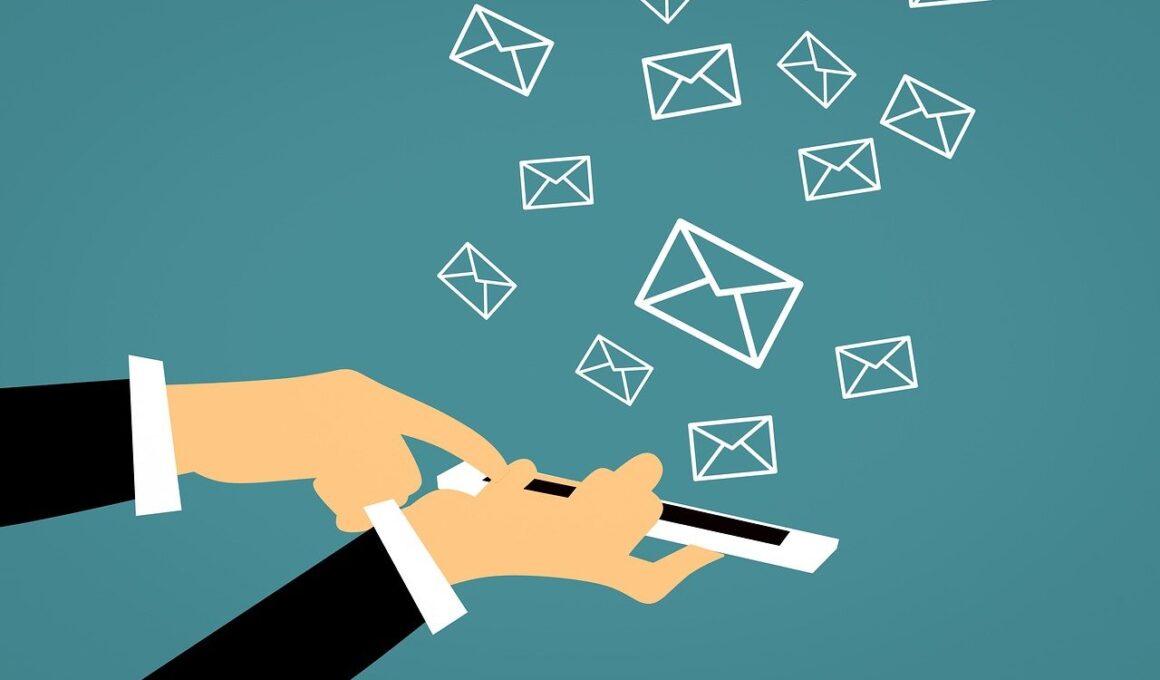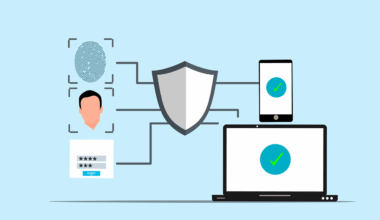Exploring the Use of SMS with Email Marketing Automation
Email marketing automation has become a cornerstone for businesses to enhance their communications. Combining it with SMS marketing presents opportunities that are not only effective but can significantly amplify engagement. Integrating SMS into your strategy promotes immediate access to your audience. SMS has a higher open rate compared to emails, fostering quicker responses and facilitating real-time interaction. When you marry these two approaches, you gain the ability to reach customers on multiple fronts, reinforcing your messaging. This dual-channel strategy empowers marketers to drive campaigns that are both timely and relevant. The interplay between email and SMS allows for more personalized experiences, sending tailored messages that resonate with individual preferences. For instance, time-sensitive offers can be sent via SMS, steering recipients toward email communications with additional details. Engaging customers through both channels leads to increased touchpoints that enrich brand experiences. Creating effective campaigns involves crafting cohesive messages that leverage the strengths of each platform, maximizing visibility and response rates. Don’t overlook the potential that lies at the intersection of these two powerful tools.
A major benefit of SMS combined with email marketing automation is enhanced customer engagement. This synergy leads to higher open rates, as customers receive timely notifications that prompt action. Imagine sending an email with a detailed offer while simultaneously notifying recipients via SMS to check their inbox. This tactic not only captures attention but urges action through a strategic nudge. Brands can foster a sense of urgency with limited-time offers announced via SMS, which are expanded upon in follow-up emails. The result? A seamless customer journey that smoothly guides users from awareness to decision-making. Furthermore, this method personalizes interactions. Marketers can leverage customer data to segment audiences, tailoring messages to distinct needs. Automated SMS reminders for upcoming appointments or deadlines, paired with emails outlining more information, foster meaningful connections. Integrating SMS into your email marketing strategy creates multiple engagement opportunities, optimizing conversion rates. Companies can also utilize SMS for feedback requests, driving the collection of valuable insights post-campaign. These insights inform future strategies, allowing for continuous improvement and adaptation to customer preferences.
Effective Strategies for Integration
To successfully integrate SMS and email marketing automation, certain strategies should be employed. First, ensure your campaigns align with customer preferences, utilizing data analytics to understand engagement metrics. Tailoring content based on previous interactions enhances relevance, increasing the likelihood of conversions. Next, employ trigger-based messaging for both channels. For instance, when a user subscribes through an email, an automatic SMS welcome message can enhance their experience. This instant acknowledgment reiterates brand presence and fosters trust. Additionally, consider implementing A/B testing to refine messaging and timing. Testing different sending times, SMS versus email alternatives, and subject lines provide insights into customer behavior. Monitoring these results helps in optimizing campaigns for maximum efficacy. Another strategy includes utilizing a consistent brand voice across channels, ensuring messages are cohesive, no matter the platform. This approach reinforces brand identity and builds customer familiarity. Lastly, the implementation of clear calls to action across both platforms drives engagement. Whether it be links to products, service inquiries, or feedback requests, effective prompting is essential for inducing customer responses.
Moreover, compliance with regulations surrounding SMS marketing is crucial to avoid potential pitfalls. Businesses must adhere strictly to guidelines such as obtaining permission before sending marketing messages. Customers should opt in willingly, allowing you to build a robust subscriber list effortlessly. Clear disclosure about the nature of messages and potential costs associated with SMS should be provided before enrollment. Failing to comply with these regulations can lead to fines and damage your brand’s reputation. Additionally, creating an easy opt-out process is vital, letting customers manage their preferences without hassle. The ability to unsubscribe can enhance trust and, ironically, may lead to higher overall engagement. When customers feel in control, they are more likely to respond positively to your messages. Create a balance between informative content and promotional messages to retain customer interest while complying with regulations. Transparency within your marketing efforts fosters credible relationships with your audience, converting skeptical recipients into loyal customers over time. Maintaining a clean, organized contact list is necessary to respect your audience’s privacy and preferences continually.
Measuring Success
To derive maximum benefit from integrating SMS with email marketing automation, measurement of success is paramount. Key performance indicators (KPIs) should be established early in the campaign process. Focus on metrics such as open rates, click-through rates, and conversion rates for both platforms. Understanding how each channel contributes to your overall strategy allows for better resource allocation and optimization. Utilize analytics tools that can track these metrics effectively across both mediums, providing comprehensive insights into customer behaviors and preferences. This data enables timely adjustments to your strategies. Moreover, customer feedback should also play a significant role in measuring success. Solicit responses on how customers perceive your communications. Surveys via SMS or email post-campaign can uncover valuable feedback about their experiences. Tracking customer retention rates in conjunction with your campaigns helps to identify trends that emerge post-integration. Understanding the lifetime value of your customers can quantify the effectiveness of your SMS and email campaigns combined. When evaluating performance, leverage this information to refine and enhance future marketing efforts, ensuring ongoing growth and satisfaction.
Investing in the right technology is essential for successfully merging SMS and email marketing automation. Various platforms exist that offer integrated solutions, allowing businesses to manage campaigns from a single dashboard. These platforms streamline communication efforts, saving time while maximizing efficiency. Features to look for in these technologies include automation capabilities, robust analytics, and customer segmentation tools. A comprehensive approach ensures that you can personalize messages effectively for diverse audience segments. Look for systems that offer testing capabilities to trial campaigns before launching them broadly. This allows marketers to gather insights and make adjustments based on real data. Furthermore, ease of use is critical. The more intuitive the system, the better the adoption rate among your marketing teams. Training and support should be readily available to assist in navigating these platforms, ensuring that your business maximizes its investment. Additionally, ensure compliance features are incorporated within the technology to avoid regulatory pitfalls. As SMS and email continue evolving, maintaining the right technology ensures relevance and competitiveness in fast-paced industries.
The Future of Marketing Automation
Looking ahead, the future of marketing automation lies in the continuous evolution of methods and technologies. As consumer behaviors shift, integrating SMS with email marketing is poised to adapt more rapidly than traditional methods. This innovation allows marketers to stay connected where customers are most engaged. With advancements in AI and machine learning, automation processes will likely become more refined. This will lead to intuitive algorithms that analyze user behavior intricately. Additionally, greater customization options will enable brands to create uniquely tailored campaigns that resonate deeply with their audiences. Privacy and data protection pressures will also refine how marketing automation plays out across channels. Understanding customer expectations around privacy will shape best practices, ensuring that businesses maintain trust while driving innovations. Scalability will play a crucial role in future strategies. As companies grow, they must ensure that their marketing efforts evolve alongside them. Balancing the complexity of integrated marketing solutions with user-friendly experiences is key. Ultimately, as the landscape changes, staying proactive and informed will be essential for brands looking to thrive within the marketing automation space.
In conclusion, exploring the integration of SMS with email marketing automation paves the way for successful campaigns. This approach merges the immediacy of SMS with the depth of email, creating a cohesive strategy that enhances customer engagement. By utilizing the strategies discussed, companies can develop campaigns that not only reach but resonate with their audience. Enhanced compliance with regulations ensures that brands maintain trust while navigating the marketing landscape. As technologies advance, embracing integrated solutions will be vital in positioning brands for future success. Collecting and analyzing data allows for ongoing optimization, helping marketers adapt to customer preferences dynamically. As businesses deepen their understanding of consumer behaviors, the ability to retain customers grows stronger. The intersection of SMS and email not only promises unique opportunities but establishes lasting relationships that drive results. By implementing thoughtful segmentation and continuous measurement, businesses can ensure ongoing success in their marketing automation efforts. Ultimately, the future looks promising for brands prioritizing this integrated approach.


